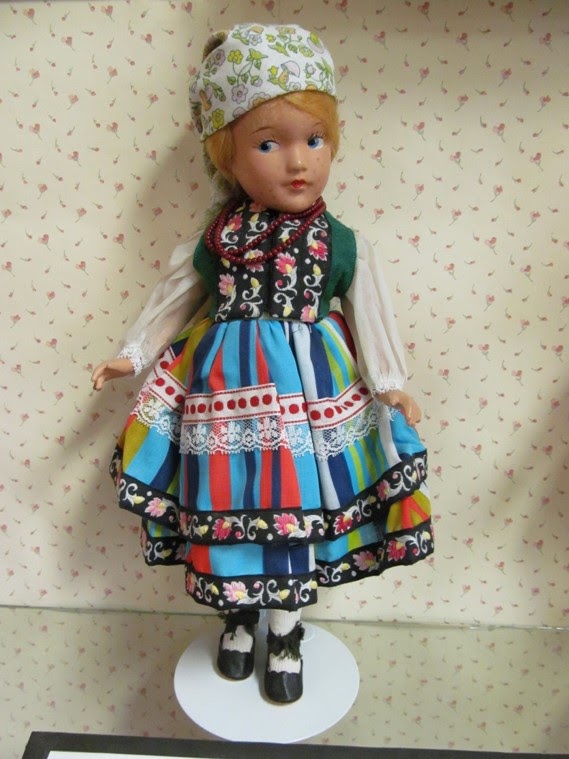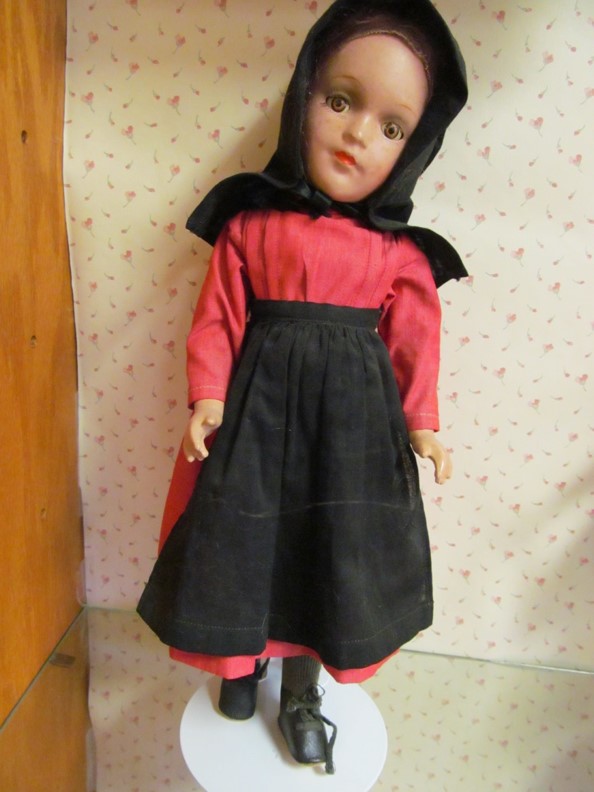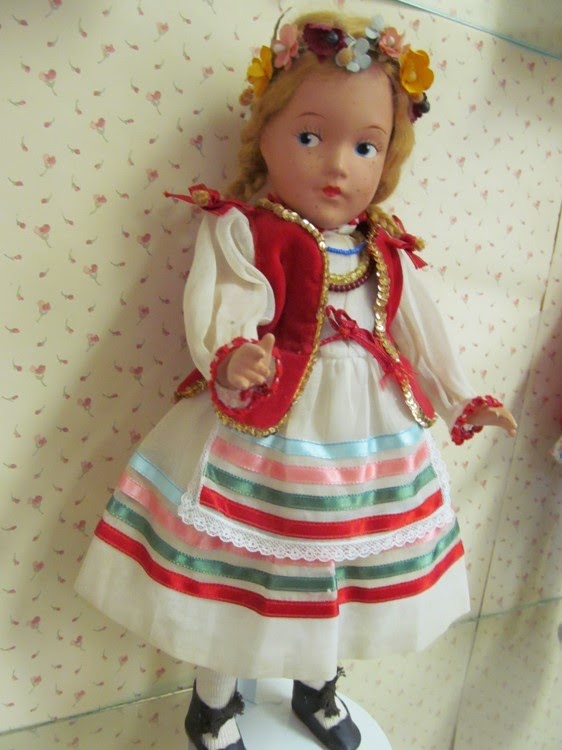Marguerite deAngeli created a stream of children's fiction that enriched our country's literature and described its astonishing cultural diversity. Mrs. deAngeli's best-loved tales are about girls growing up in America, some long ago, some in our own century. Each doll is a three dimensional double of Mrs. deAngeli's illustrations. They were produced during the 1940's and 50's. The de Angeli Archive has five Hedwig dolls on display in the meeting room.
Anelia from Up the Hill

Another version of the Hedwig Doll, Anelia, from the book, Up the Hill.
Lydia from Henner's Lydia.

Hedwig Doll, Lydia, from the book, Henner's Lydia.
Suzanne from Petite Suzanne

Hedwig Doll, Suzanne, from the book, Petite Suzanne.
Anelia from Up the Hill

Hedwig Doll, Anelia, from the book, Up the Hill.
Hannah from Thee, Hannah!

Hedwig Doll, Hannah, from the book, Thee, Hannah!
Marguerite deAngeli and the Hedwig Dolls
Excerpted from an article by Ann Bahar called Marguerite deAngeli and the Hedwig Dolls that appeared in the Doll Reader in May of 1988. Used with permission. Subscription information for the magazine is available on their website: dollsmagazine.com
When a collector suggested that dolls be crafted to resemble the book children, Mrs. deAngeli and her friend, Hedwig Ryglewicz leapt at the idea. Hedwig, an expert needle-woman, volunteered to costume the dolls as three-dimensional doubles of their painted selves.
Mrs. deAngeli's publishers, Doubleday and Company, were delightedly the project. It was agreed that the dolls would be called Hedwig Dolls and that each would sport a round yellow-and-black cardboard tag around its wrist. One side would bear a picture of Lydia, Suzanne, Hannah and Elin as they appear in the books. The reverse would carry the motto: "Hedwig Dolls Registered- Authorized Characters from the books of Marguerite de Angeli."
Before Hedwig could consider fabrics and design patterns for costumes, the two friends combed New York's doll manufacturing district in search of a satisfactory de Angeli book illustration look-a-like. They settled on an (unmarked) Ideal Toy Company 14inch composition doll and placed an initial order for 100 to be shipped to Mrs. Ryglewicz's New Jersey address.
Hedwig custom-designed wigs to fit the four deAngeli characters she planned to dress first. Thus, Amish Lydia had auburn braids twisted into a bun at the nape of her neck. Suzanne's yellow hair flies free in a mohair bob while Elin's is neatly braided. Hannah's hairdo, true to long-ago Quaker practice, is brushed smoothly away from her face and pinned at the back of her head.
In the books, Marguerite deAngeli's children wear different outfits on different pages, a detail which enhances the stories' slice-of-life impact on the reader. Hedwig paged through each book to select the outfit she wished to replicate for her character doll. [You] are encouraged to study the illustrations that inspired the costumes.
Hedwig created deAngeli dolls for 20 years, and pronounced differences exist between early dolls and those purchased and costumed later. [The dolls were produced as exhibit supplements used for Doubleday Book Salesman, and were available for purchase only through Doubleday.] These dolls are treasures from the 1940'sand 1950's, the delightful products of a unique collaboration between an imaginative needle-artist and a gifted author/illustrator. However, for those of us who were raised on the deAngeli books, the measure of a Hedwig doll goes far beyond its value as an offbeat collectible. It is everyone's favorite dream made real - a beloved character from story land come to life.
